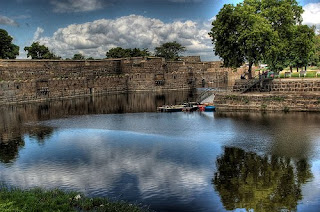AVM (Tamil: எ.வ.ம) is the oldest and largest film production studio in India. It is currently owned by M. Saravanan and his son, M. S. Guhan. The most recent film they have produced since their opening with Nam Iruvar in 1947, is Vettaikkaaran and Leader. The filming studios are located in Vadapalani, Chennai. Besides Tamil they have produced many films in Bollywood and Telugu. They have introduced numerous actors in the Tamil and Telugu film industries, some of the prominent actors are Vyjayanthimala, Sivaji Ganesan and Kamal Haasan.
Early history
Among South India's movie moguls, A.V. Meiyappan is a far-sighted entrepreneur and filmmaker with dash and dynamism, he had a finger on the pulse of the moviegoer. Entering the world of movies soon after it was introduced in India in the year 1931, for nearly half a century he worked incessantly, producing pictures of many kinds in many languages. A man with great foresight, he faced much adversity early in his career but like a true pioneer fought relentlessly and made it to the top.
A talent scout, he opened the doors of opportunity and success to many performing artistes and technicians.
Born on 28 July 1907, Avichi Meiyappan hailed from a Nattukottai Nagarathar family of Karaikkudi in Tamil Nadu. Avichi Chettiar ran a mini-department store, named AV & Sons. It sold gramophone records. Meiyappan, who joined his father's shop even as a teenager, decided to produce gramophone records instead of merely marketing them. He came to Madras where along with friends K.S.Narayana Iyengar, Subbaiah Chettiar and others promoted Saraswathi Stores. He found excellent support in K.P.Varadachari, its manager, and his lawyer friend Thoothukudi Govindachari Raghavachari he produced many records.
Maiden venture
Tomb at the AVM Studios in Chennai
The dawn of the talkie era (1931) inspired Meiyappan to start Saraswathi Sound Productions and he launched his maiden movie venture, Alli Arjuna a Hindu mythology based movie. The film was shot in Calcutta and proved a total flop as the one that followed named Ratnavali. At this point, an aspiring amateur actor and college graduate A.T.Krishnaswamy joined the unit as assistant director who was associated with Meiyappan for nearly a decade and wrote and directed the early AVM productions.
The reverses forced Meiyappan to lie low but only for a while. In association with Jayanthilal, a cinema house owner based in Bangalore, he promoted a new company Pragati Pictures Limited. Grabbing an opportunity that came his way, AVM made Nanda Kumar, Tamil version of a Marathi film launching it as a Pragati production. The highlight of this movie was the debut of T.R.Mahalingam in to Tamil movie Industry.
The film was a landmark because for the first time playback singing was tried, with Lalitha Venkatraman singing for the actor who played Devagi. Meiyappan took the sprawling Club House off Mount Road on lease and shot scenes without going to studios and erecting sets. Soon after he shifted his unit to another sprawling edifice known as Admiralty House in Adyar.
Success
Diamond Jubilee year of AVM Productions
In 1940, Meiyappan produced Bhoo Kailas, a mythological film which created history. The film was made in Telugu, its lead players were from Telugu cinema and it was directed by Sundar Rao Nadkarni, a Mangalorean who had his training in Bombay. The film turned out to be a big hit and also won critical acclaim! Meiyappan struck gold with comedy next. Sabapathy (1941) with the saucer-eyed T.R.Ramachandran in the lead, Kali N.Ratnam and K.Sarangapani was a run away success. Then came a series of hits like En Manaivi, Harishchandra (1943), Sri Valli.
The city of Madras began to feel the strains of the World War II raging on elsewhere and to reduce the exposure from Japanese bombing, Meiyappan moved his facilities to Karaikudi. In the outskirts of the town karaikudi he occupied a drama auditorium with a large open area around it on long lease and erected a studio. Thus was born AVM Productions with AVM Studios.
Hits like Nam Iruvar (1947), Andha Naal (1954), and the National Award winning Hum Panchi Ek Daal Ke (1957) followed.
Meiyappan died on 12 August 1979, and after his demise his sons took over the mantle. The AVM saga continues, its glory undiminished


















